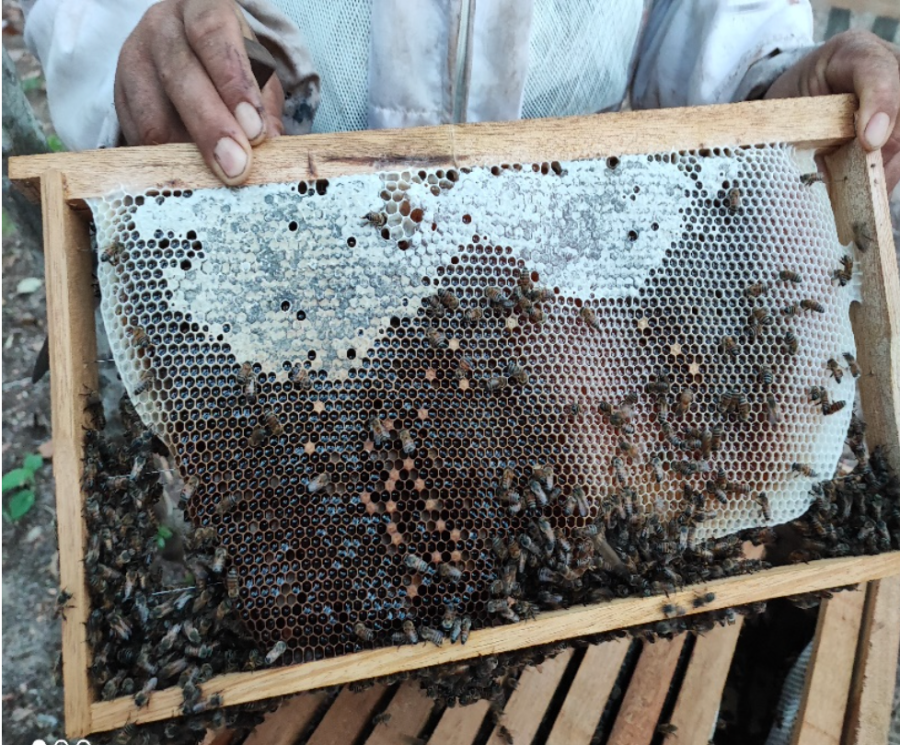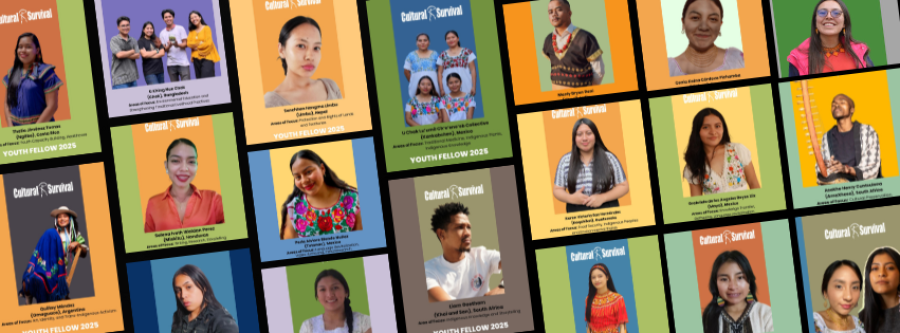Indigenous peoples throughout the world face many threats to their lands and territories and to their cultural integrity. While most people have heard of the negative consequences of mining, logging, dams, and other infrastructure projects, many would not list national parks and other protected areas among the threats. These areas are often seen as benign, as valuable contributions to biodiversity conservation and local, regional, and global environmental security. Many are well-known tourist destinations and recreational sites.
It may surprise some then to read indigenous delegates’ closing statement at the Fifth World Parks Congress (WPC), held in South Africa in September 2003:
The declaration of protected areas on indigenous territories without our consent and engagement has resulted in our dispossession and resettlement, the violation of our rights, the displacement of our peoples, the loss of our sacred sites and the slow but continuous loss of our cultures, as well as impoverishment. It is thus difficult to talk about benefits for Indigenous Peoples when protected areas are being declared on our territories unilaterally. First we were dispossessed in the name of kings and emperors, later in the name of State development and now in the name of conservation.
To overcome this history of dispossession and exclusion of and violence against indigenous peoples in protected areas, Indigenous Peoples here at the WPC propose the establishment of a high level, independent Truth and Reconciliation Commission on Indigenous Peoples and Protected Areas. … It is envisaged that the Commission will investigate and then respond impartially to historical cases of violations and abuses of indigenous peoples’ rights associated with the creation of protected areas. It will also promote healing and reconciliation and have appropriate mechanisms for restitution and redress of grievances.
These statements are strongly supported by independent research (including Marcus Colchester’s article in this issue of Cultural Survival Quarterly). During a presentation to the WPC, for instance, anthropologist Michael M. Cernea and sociologist Kai Schmidt-Soltau spoke about the Congo basin: “Very often, the intervention pattern is the wholesale treatment of land as state property, denial of customary ownership and indigenous traditional rights to land and assets, and the forced displacement of people.” Focusing on resettlement, Cernea and Schmidt-Soltau further concluded that:
The strategy to conserve biodiversity through national parks has displaced many tens of thousands of very poor park residents, transforming them into conservation-refugees. If parks achieve additional degrees of conservation, part of the cost is paid in the coin of additional impoverishment for the people uprooted from their habitat and not resettled in a sustainable manner; in turn, the ecological impacts on parks and surrounding forests are a mixture of positive and negative effects, at least partly defeating the conservation purposes. Comparisons with research findings from other parts of the developing world on the conservation-induced displacement of indigenous people reinforce our argument.
In the past 150 years, more than 12 percent of the world’s surface has been set aside through the establishment of some 100,000 protected areas. Many of these areas have been established since 1992, when the international conservation community committed itself to a target of at least 10 percent of the world by 2002. By some estimates, around 50 percent of these protected areas encompass lands and territories traditionally occupied and used by indigenous peoples.1 In the Americas, this number rises to over 80 percent.[2] Additional areas are also under active consideration for protected area status, especially marine and coastal areas. In Guyana alone, a small country on the northeast coast of South America, up to 10 new protected areas are planned, eight of which affect indigenous territories presently and traditionally occupied and used, as Jean La Rose reports in this issue.
As several articles in this Cultural Survival Quarterly demonstrate, in developing countries many of these protected areas have been, and are being, implanted with the support of international aid, including funds furnished by multilateral and bilateral development agencies. Thomas Griffiths, John Nelson and Belmond Tchoumba, and Helen Newing and Lissie Wahl discuss this phenomenon in their contributions to this issue. Non-governmental conservation organizations, the biggest of which have larger budgets than some of the countries in which they operate, are also major players—demonstrated in the articles by La Rose, Fergus MacKay and Ricardo Pané, and Nelson and Tchoumba. In some cases, indigenous peoples are using protected areas as a way of providing greater security over their resources and traditional lands, and some are seeking recognition of their own indigenous-owned protected areas. Some are entering into co-management agreements with state and private conservation actors, while others reject the notion of co-management as undermining indigenous sovereignty and other rights, according to Sheila Dutton and Fiona Archer’s contribution.
Indigenous peoples have been actively engaging the conservation community for decades in order to ensure that protected areas do not violate their rights, particularly their rights to self-determination, to consent to activities such as resettlement, and to own, control, and manage their traditional lands, territories, and resources. According to Colchester, some of the main conservation actors have adopted policy statements that attempt to account for indigenous peoples’ interests. But, as indigenous peoples repeatedly point out, these statements are sub-standard in relation to established human rights guarantees, and often are not implemented. Egregious violations of indigenous peoples’ rights in relation to protected areas continue to this day.
Indigenous peoples are also calling for the restitution of lands that have been incorporated into protected areas without their consent—few examples of real restitution exist despite a strong basis for such in international human rights law3, as Aroha Mead reports in her article. They demand recognition that indigenous peoples have been protecting and managing their own territories for thousands of years and have the right to continue to do so, alone or in collaborative partnerships, in accordance with their own laws and traditions, as demonstrated by Joji Carino’s and Jannie Lasimbang’s articles in this issue.
World Parks Congress
Around 150 indigenous people converged at the 2003 Fifth World Parks Congress (WPC). The WPC is held every 10 years and provides the major global forum for setting the international population community’s agenda on protected areas. The main outcomes of the WPC were the Durban Accord, the Durban Action Plan, and a series of recommendations. Importantly, the action plan acknowledged “that many mistakes have been and continue to be made and … we believe that there is an urgent need to re-evaluate the wisdom and effectiveness of policies affecting indigenous peoples and local communities.”4 This statement was complemented by a number of concrete targets, including establishment of participatory mechanisms for restitution of traditional lands and territories by 2010, full respect for rights when establishing protected areas, and meaningful participation by indigenous peoples in protected area management. One point required that there be “action taken to ensure that protected areas strive to alleviate poverty and in no case to exacerbate poverty,” calling for the strict elimination of the “resettlement of indigenous peoples and local communities and the involuntary sedenterisation of mobile indigenous peoples without prior informed consent.”[5]
Indigenous peoples are presently attempting to further institutionalize these gains at the Seventh Conference of Parties to the Convention on Biological Diversity, to be held in March 2004 with protected areas as a major theme, and in the World Conservation Union (IUCN) Conservation Congress in November 2004 (see Carino’s article). Whatever the results of these international processes, the real challenge and test lies in translating international principles that are consistent with indigenous peoples’ rights—and have been developed with indigenous peoples’ full participation—into practice at the national and local level.
1. Amend, S. & Amend, T. (1992). 2. Amend, S. & Amend, T. (1992). 3. See, among others, MacKay, F. (2002, October). Available at: www.forestpeoples.org. 4. Durban Action Plan, Outcome 5, at 25. 5. Durban Action Plan, Outcome 2, at 15.
Fergus MacKay (fergus@euronet.nl) is coordinator of the Forest Peoples Programme’s Legal and Human Rights Programme and Three Guyanas Programme. Emily Caruso (emily@forestpeoples.org) is campaigns assistant at the Forest Peoples Programme.
References and further reading
Amend, S. & Amend, T., Eds. (1992). Espacios sin habitantes? Parques nacionales de America del Sur. Gland, Switzerland: IUCN.
MacKay, F. (2002, October). Addressing Past Wrongs. Indigenous Peoples and Protected Areas: the right to restitution of lands and resources. Occasional Paper, Moreton-in-Marsh, U.K.: Forest Peoples Programme. Available at www.forestpeoples.org.



